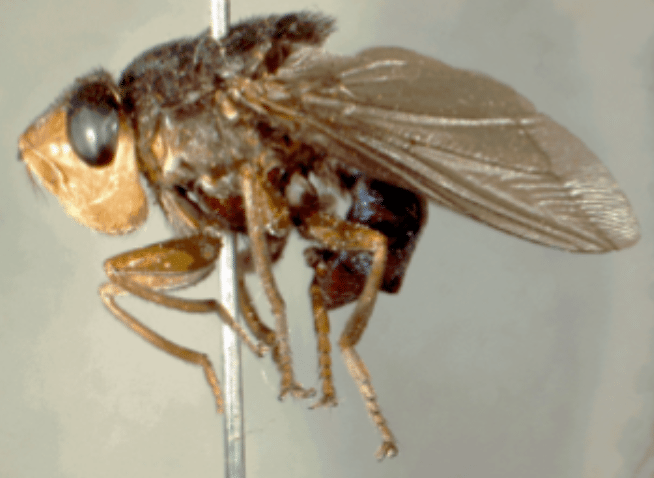Your Cart is Empty
Free Shipping on Orders Over $40
Free Shipping on Orders Over $40
Free Shipping on Orders Over $40
Eliminating flies indoors can be done with a combination of traps and liquid sprays. Use fly strips in areas that house flies are most numerous, especially near windows. Place the strips so they will hang about 8 feet from the floor, and above the head of people occupying the room. Leave the strips until they are at least 70% covered with flies. The flies captured on the strip soon after it is placed will help to attract other flies to land there. Use an aerosol approved for indoor use to spray flies that are not captured by the hanging strips.
Preventing house flies in or around houses is difficult, but it begins with determining the source or the breeding site. Garbage close to the house must be removed. A dumpster nearby should be inspected to determine if house flies are breeding there. Additional preventative measures include ensuring that any doors or windows to your home remain closed.
_____________________

Flies are one household pest that everyone has to deal with no matter where they live. Flies are not only a nuisance, but they can also transmit harmful diseases. There are many different species of flies that are troublesome for homeowners, but the methods for getting rid of them are nearly all the same. Through proper sanitation, exclusion efforts, and various control methods, your fly problems can be conquered. Let’s take a closer look at the types of flies that might be bothering you and what you can do to keep them away.
 By USDAgov
By USDAgov  By Sanjay Acharya
By Sanjay Acharya 
The horse-fly belongs to a group of biting flies that are found throughout the world. Horse-flies are large (up to an inch) with wide bodies and prominent compound eyes. They are typically dark brown or black with dark eyes. Horse-flies eat nectar and plant juices, but females require a blood meal in order to reproduce. Female horse-flies seem to find victims by movement, warmth, and carbon dioxide, so they will often bite larger mammals that produce more of these things. Cattle, horses, and humans are all main targets of horse-flies. Horse-flies like to be in the sunshine, so they are not often found indoors or in shady areas. Since horse-flies will often require several bites to get enough blood, they can transmit diseases between their victims. Horse-flies have been shown to be vectors of trypanosoma, anthrax, and tularemia. A horse-fly bite will be a painful raised area of skin. Other symptoms may include a rash, dizziness, and in very rare cases a serious allergic reaction.<3>
 Adult horse-fly
Adult horse-fly
Flies are interesting animals because they go through complete metamorphosis, meaning that they look different at eachlife stage. First, an adult female will lay eggs. These eggs will differ in appearance by species, but they will be laid in areas where the larvae will be able to feed immediately after hatching. For most species of flies, this means that eggs will be laid on organic matter that has plenty of moisture. For houseflies, breeding grounds include things like rotting fruits, garbage, decaying material, and fresh manure. Botflies and blowflies will lay their eggs on living or dead animals. Once the eggs hatch, the larvae (known as maggots) will burrow into the organic material and eat and grow. Maggots look like tiny, white worms that subsist off decay and rot. The maggots will then form a pupae with a hard shell to protect them as they develop. In just a few days, they will develop legs and wings and emerge as an adult fly that can mate very soon afterward. The life cycle of flies is quite short, so populations can explode very quickly. Understanding this life cycle can help in your fly control efforts by alerting you to the places where eggs are often laid. This will help focus your sanitation efforts so that you can stop the cycle early.
 “Eggs, Larvae, Pupae, and Adult Fly” By Alan R Walker
“Eggs, Larvae, Pupae, and Adult Fly” By Alan R Walker